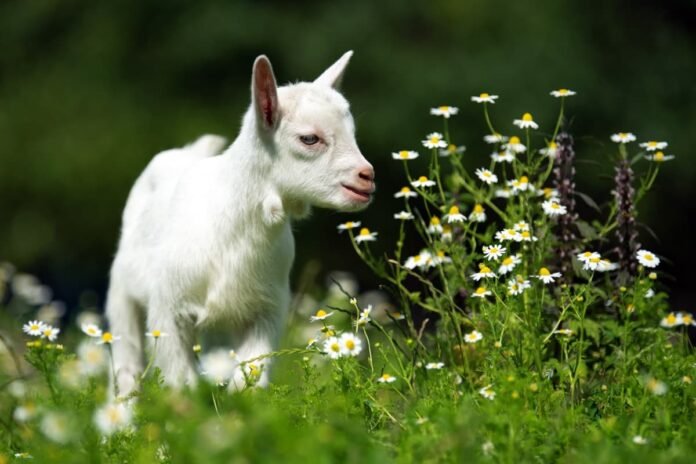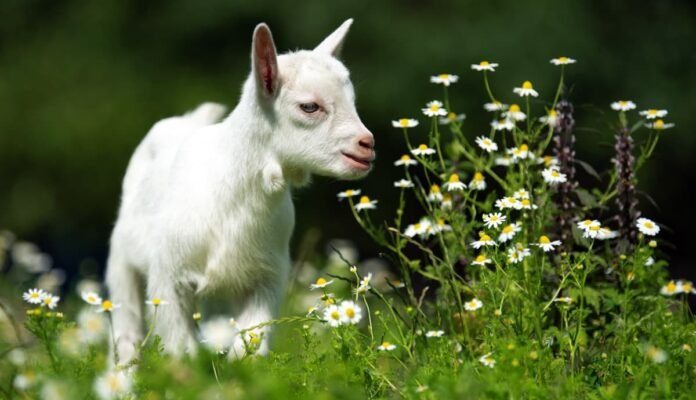
Feeding and nutritional needs for Saanen goats can often seem confusing, especially if you’re new to goat ownership. These goats are known for their milk production, and just like us, their diet plays an important role in their overall health and milk quality. So, let’s dive into what makes a balanced meal for your Saanen goats and how to keep them thriving.
Understanding Saanen Goats’ Nutritional Needs
Saanen goats are renowned for their milk production, often dubbed the “dairy divas” of the goat world. With such high milking capacity, their nutritional needs are quite specific. A well-balanced diet is crucial for maintaining their health and maximizing milk yield. Think of it as giving a car the right fuel; the better the fuel, the better the performance.
These goats require a mix of forage, grains, and supplements. The ideal ratio changes based on their age, weight, and whether they are pregnant or lactating. For example, pregnant or nursing goats need more protein and energy than those that are not.
In general, Saanens need around 15% protein in their diet during lactation and slightly less as they grow older or when not lactating. Providing a diet low in nutrients can lead to health issues, decreased milk production, or even stunted growth in younger goats.
The Role of Forage in Their Diet
Forage is the cornerstone of a Saanen goat’s diet. Good quality hay or pasture provides the necessary fiber these goats need to digest their food properly. Just like us humans need fiber for a healthy digestive system, goats depend on it too.
Here’s the thing: not all forage is created equal. Some ideal options for Saanen goats include:
- Timothy Hay: High in fiber and low in protein, making it perfect for adult goats.
- Alfalfa Hay: Rich in protein and calcium, beneficial for lactating goats but should be limited for non-lactating ones.
- Pasture: Fresh grass is fantastic for grazing and provides essential nutrients.
Make sure to keep their forage fresh and free from mold. Moldy hay can lead to respiratory issues and other health concerns. If possible, offer a mix of different forages to keep their diet interesting and nutritious.
Grains and Concentrates: The Extra Boost
While forage forms the bulk of a Saanen’s diet, adding grains or concentrates can provide that extra boost they sometimes need. These foods are energy-dense and are especially useful for lactating goats that require more calories.
Common grains to consider include:
- Corn: A high-energy grain, corn is often used to boost energy but should be fed in moderation.
- Oats: They provide fiber and are gentler on the digestive system compared to corn.
- Barley: This is another great option that can help with weight gain.
You might be wondering how much grain to feed your Saanen goats. As a general guideline, lactating females can be fed around 1 to 2 pounds of grain daily, while non-lactating goats can have less. Just be cautious, as too many grains can lead to digestive issues like bloating.
Essential Minerals and Vitamins
Just as we take our vitamins, Saanen goats require specific minerals and vitamins to thrive. These are crucial for bone health, milk production, and overall vitality. And since goats don’t get all their nutrients from their feed alone, supplementation can be necessary.
Key minerals include:
- Calcium: Essential for bone health, especially in lactating goats.
- Phosphorus: Works hand in hand with calcium for bone growth and health.
- Salt: Important for their hydration and electrolyte balance.
You can provide these minerals through commercial goat mineral mixes or loose salt blocks. Always ensure that your goats have access to clean, fresh water, as hydration is just as crucial as food.
Feeding Schedule and Routine
Creating a consistent feeding schedule is key to keeping your Saanen goats healthy. Goats are creatures of habit, so feeding them at the same time each day can help with their digestive system. Plus, it can make your life easier too!
Here’s a simple feeding routine you might consider:
1. Morning: Give them their hay or pasture first. This will help jumpstart their digestion.
2. Midday: Introduce grains or concentrates, especially if they are lactating.
3. Evening: Offer a final serving of hay to keep them satisfied overnight.
Adjust the amounts according to their age, weight, and activity level. If you notice any changes in appetite or behavior, it might be worth consulting a vet for advice.
Common Feeding Mistakes to Avoid
Even experienced goat owners can make feeding mistakes. Luckily, awareness is the first step towards better care for your Saanens. Here are a few common pitfalls to steer clear of:
– Overfeeding Grains: Too many grains can lead to obesity and digestive issues. Stick to recommended amounts.
– Neglecting Forage Quality: Always check your hay for mold or spoilage. Bad forage can lead to serious health problems.
– Ignoring Individual Needs: Remember that not all goats are the same. A lactating goat’s needs will differ from a retired one.
By paying close attention to their eating habits and health, you can ensure your Saanens are getting the best care possible.
Supplementing with Treats
Saanen goats love treats just like we do! Offering occasional snacks can keep them happy and provide some additional nutrients. However, moderation is key.
Some healthy treat options include:
- Fruits: Apples and carrots can be great as long as they’re given in small quantities.
- Vegetables: Leafy greens and root vegetables can add variety to their diet.
- Commercial Goat Treats: These are designed specifically for goats and can be a good way to ensure they’re receiving proper nutrients.
Just remember to avoid anything toxic, like chocolate or certain plants like azaleas and rhododendrons. Always do a little research on new treats before introducing them.
In conclusion, feeding Saanen goats may seem like a daunting task at first, but with a little care and knowledge, it becomes a rewarding responsibility. By understanding their nutritional needs and providing a balanced diet, you’ll not only keep them healthy but also ensure they thrive and produce high-quality milk. So, roll up your sleeves and embrace your role as a goat chef—you’ll find the experience both enjoyable and fulfilling!

